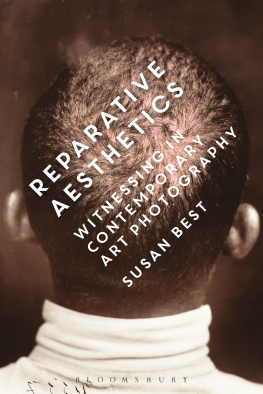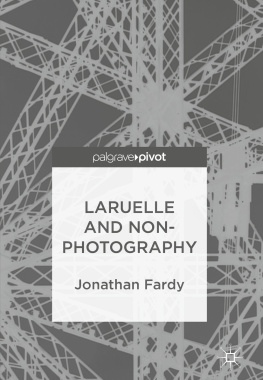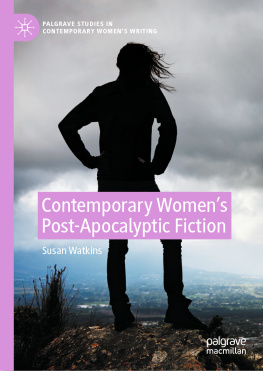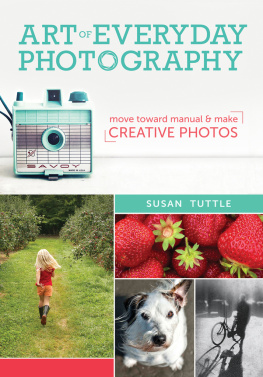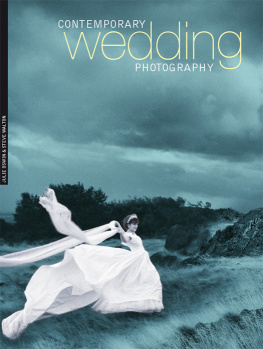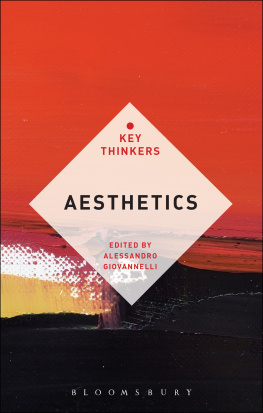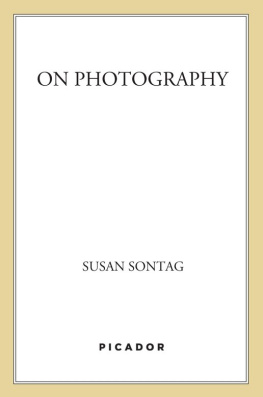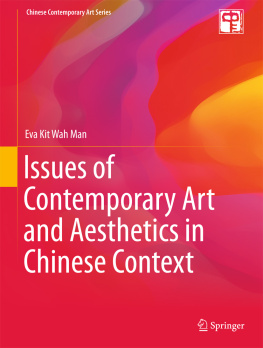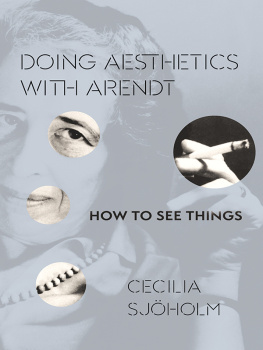Susan Best - Reparative Aesthetics: Witnessing in Contemporary Art Photography
Here you can read online Susan Best - Reparative Aesthetics: Witnessing in Contemporary Art Photography full text of the book (entire story) in english for free. Download pdf and epub, get meaning, cover and reviews about this ebook. year: 2016, publisher: Bloomsbury, genre: Romance novel. Description of the work, (preface) as well as reviews are available. Best literature library LitArk.com created for fans of good reading and offers a wide selection of genres:
Romance novel
Science fiction
Adventure
Detective
Science
History
Home and family
Prose
Art
Politics
Computer
Non-fiction
Religion
Business
Children
Humor
Choose a favorite category and find really read worthwhile books. Enjoy immersion in the world of imagination, feel the emotions of the characters or learn something new for yourself, make an fascinating discovery.
- Book:Reparative Aesthetics: Witnessing in Contemporary Art Photography
- Author:
- Publisher:Bloomsbury
- Genre:
- Year:2016
- Rating:5 / 5
- Favourites:Add to favourites
- Your mark:
- 100
- 1
- 2
- 3
- 4
- 5
Reparative Aesthetics: Witnessing in Contemporary Art Photography: summary, description and annotation
We offer to read an annotation, description, summary or preface (depends on what the author of the book "Reparative Aesthetics: Witnessing in Contemporary Art Photography" wrote himself). If you haven't found the necessary information about the book — write in the comments, we will try to find it.
Susan Best: author's other books
Who wrote Reparative Aesthetics: Witnessing in Contemporary Art Photography? Find out the surname, the name of the author of the book and a list of all author's works by series.
Reparative Aesthetics: Witnessing in Contemporary Art Photography — read online for free the complete book (whole text) full work
Below is the text of the book, divided by pages. System saving the place of the last page read, allows you to conveniently read the book "Reparative Aesthetics: Witnessing in Contemporary Art Photography" online for free, without having to search again every time where you left off. Put a bookmark, and you can go to the page where you finished reading at any time.
Font size:
Interval:
Bookmark:
Aesthetics
Thinking in Film, Mieke Bal
The Curatorial, edited by Jean-Paul Martinon
Eco-Aesthetics, Malcolm Miles
Counter-Memorial Aesthetics, Veronica Tello

Marcelo Brodsky, The Class Photo, 1996
Oscar Muoz, Aliento [Breath], 1995
Anne Ferran, Untitled, from Female House of Correction after John Watt Beattie, 2000
Anne Ferran, Untitled, from Lost to Worlds, 2008
Anne Ferran, Untitled, from Lost to Worlds, 2008
Anne Ferran, Untitled, from Lost to Worlds, 2008
Anne Ferran, Untitled, from Lost to Worlds, 2008
Anne Ferran, Untitled, from Lost to Worlds, 2008
Anne Ferran, Untitled, from Lost to Worlds, 2008
Anne Ferran, Untitled, from Lost to Worlds, 2008
Anne Ferran, Untitled, from Lost to Worlds, 2008
Fiona Pardington, Portrait of a life cast of Matua Tawai, Aotearoa/New Zealand, from The Pressure of Sunlight Falling, 2010
Fiona Pardington, Portrait of a life cast of Piuraki/John Love Tikao (painted), Aotearoa/New Zealand, from The Pressure of Sunlight Falling, 2010
Fiona Pardington, Portrait of a life cast of Jules Sbastien Csar Dumont dUrville, from The Pressure of Sunlight Falling, 2010
Fiona Pardington, Portrait of a life cast of Ma Pou Ma Houmi, Gambier Islands (painted), from The Pressure of Sunlight Falling, 2010
Fiona Pardington, Portrait of a life cast of Ma Pou Ma Houmi, Gambier Islands (left profile, painted), from The Pressure of Sunlight Falling, 2010
Fiona Pardington, The Pressure of Sunlight Falling (installation view), 2011
Fiona Pardington, Portrait of a life cast of Adle dUrville, from The Pressure of Sunlight Falling, 2010
Fiona Pardington, Portrait of a life cast of Koe (painted), Timor, from The Pressure of Sunlight Falling, 2010
Fiona Pardington, The Pressure of Sunlight Falling (installation view) 2011
Carrie Mae Weems, A Scientific Profile, from From Here I Saw What Happened and I Cried, 199596
Brook Andrew, Sexy & Dangerous, 1996
Rosngela Renn, Untitled (chest with nipple/woman), from Cicatriz [Scar], 1996
Rosngela Renn, Whip, 2001, from Vulgo [Alias], 19992003
Rosngela Renn, Imemorial, 1994
Rosngela Renn, Imemorial, detail, 1994
Rosngela Renn, Imemorial, detail, 1994
Rosngela Renn, Imemorial, detail, 1994
Rosngela Renn, Imemorial, detail, 1994
Rosngela Renn, Imemorial, detail, 1994
Rosngela Renn, Imemorial, detail, 1994
Zoe Leonard, My Kindergarten Class Photo, 2013
Bruno Giorgi, Os Guerreiros [The Warriors]/Os Candangos, 1957
Rosngela Renn, Imemorial, detail, 1994
Installation shot Corpo da Alma [Body of the Soul], 20032009
Rosngela Renn, Npoles, from Corpo da Alma, 2003
Rosngela Renn, Moscou, from Corpo da Alma, 2003
Rosngela Renn, Cairo, from Corpo da Alma, 2003
Rosngela Renn, Rio de Janeiro, from Corpo da Alma, 2003
Rosngela Renn, Rio de Janeiro, from Corpo da Alma, 2003
Milagros de la Torre, Guayabera, from Antibalas [Bulletproof], 2008
Milagros de la Torre, Untitled, from Blindados [Armored], 2000
Milagros de la Torre, Handgun, incriminating evidence of murder, from Los pasos perdidos [The Lost Steps], 1996
Milagros de la Torre, Crowbar, tool used to force entry, from Los pasos perdidos, 1996
Milagros de la Torre, Rudimentary weapon from broken bottle and paper, from Los pasos perdidos, 1996
Milagros de la Torre, Skirt worn by Marita Alpaca when she was thrown by her lover from the 8th floor of the Sheraton Hotel in Lima. She was found to be pregnant at the autopsy, from Los pasos perdidos, 1996
Milagros de la Torre, Belts used by psychologist Mario Poggi to strangle a rapist during police interrogation, from Los pasos perdidos, 1996
Milagros de la Torre, Police identification mask of criminal known as Loco Perochena, from Los pasos perdidos, 1996
Milagros de la Torre, Shirt of journalist murdered in the Uchuraccay Massacre, Ayacucho, from Los pasos perdidos, 1996
Milagros de la Torre, Fake police ID used by terrorist, from Los pasos perdidos, 1996
Milagros de la Torre, Flag confiscated from Shining Path terrorist, from Los pasos perdidos, 1996
Milagros de la Torre, Improvised knife made from prison bed frame, from Los pasos perdidos, 1996
Milagros de la Torre, Chemical test to identify cocaine chlorohydrate produced in a clandestine laboratory, from Los pasos perdidos, 1996
Milagros de la Torre, Incriminating love letter written by a prostitute to her lover, from Los pasos perdidos, 1996
Its funny how intellectual debts mount up rather than being defrayed over the years. Hence Im thanking again many of the same people and reading groups I thanked for my previous book. In the first instance, I owe much to a master class on feminism and psychoanalysis run by the late Margaret Whitford at Macquarie University in 1997. She opened my eyes to the breadth and variety of psychoanalytic approaches. Her interest in arts connection to philosophical issues also helped me to begin the task of analysing art through that prism. I treasure the memories of visiting galleries with her during her brief stay in Sydney.
Three reading groups have been crucial for the further development of my understanding of psychology and psychoanalysis the Silvan Tomkins Reading Group (Elizabeth Wilson, Gill Straker, Anna Gibbs, Melissa Hardie, Maria Angel and the late Doris McIlwain); the Mrs Klein group (Elizabeth Wilson, Gill Straker, Kylie Valentine, Robert Reynolds) and the Controversial Discussions group (Kylie, Eliz and Gill). Another ongoing debt is to Liz Grosz, who is a fabulous friend and mentor whose advice and great kindness I have relied upon over the years.
This project required research trips to see in the flesh the art that I discuss, and this was made possible by generous funding from the Australian Council for the Arts. Without those trips, this book simply wouldnt have been possible. On those trips, I have managed to catch up with friends, colleagues and ex-students scattered around the world who have told me what art I have to see in their cities: Alex Alberro, Nick Croggan, Fer Do Campo, Lisa Blas, Thierry de Duve, Alicia Haber, Alicia Ritson, Charlotte North, Dom and Dan Angeloro. In particular, seeing The War series by Otto Dix at MOMA in New York with Jean Franco and Nicole Fermon in 2011 helped to crystallize some of my early ideas.
Friends and colleagues have very generously read sections along the way and given me fantastic feedback: Gill Straker, Ann Stephen, Andrew McNamara, Eliz Wilson and Linda Daley. I want to especially thank Gill Straker, whose close reading of the whole manuscript has been invaluable. I am very grateful for the way she so generously shares her breathtakingly brilliant readings of psychoanalysis, grounded in its practice. I would never have realized the importance of concordant identification without her help. Thanks also to the colleagues and friends who invited me to talk about this research and for the invaluable feedback that resulted: Maryanne Dever, Simon Marsh, Karike Ashworth, Aaron Lister, Elizabeth Caldwell and Tom ORegan.
Font size:
Interval:
Bookmark:
Similar books «Reparative Aesthetics: Witnessing in Contemporary Art Photography»
Look at similar books to Reparative Aesthetics: Witnessing in Contemporary Art Photography. We have selected literature similar in name and meaning in the hope of providing readers with more options to find new, interesting, not yet read works.
Discussion, reviews of the book Reparative Aesthetics: Witnessing in Contemporary Art Photography and just readers' own opinions. Leave your comments, write what you think about the work, its meaning or the main characters. Specify what exactly you liked and what you didn't like, and why you think so.

